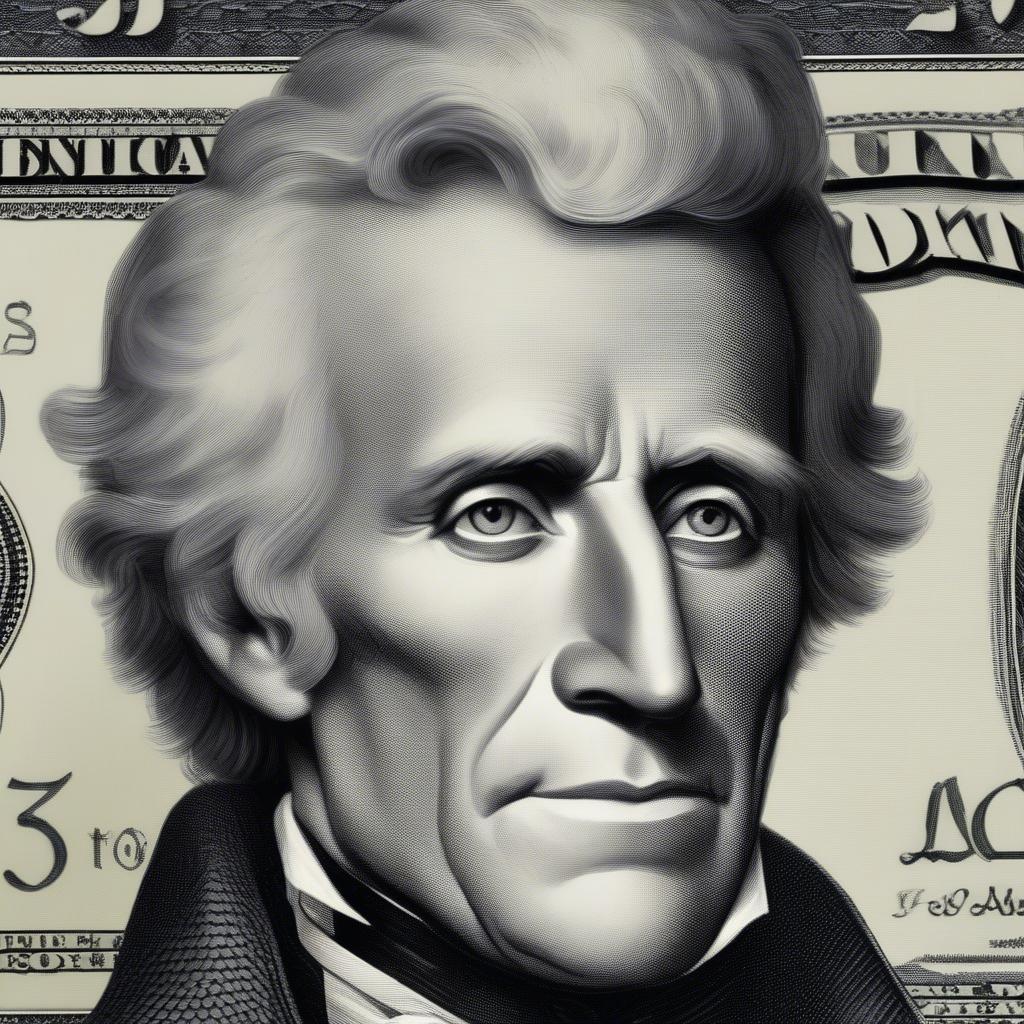
The question “who’s on a $20 bill?” often sparks curiosity, especially among those unfamiliar with American currency. The answer is Andrew Jackson, the seventh President of the United States. But the story behind his presence on the $20 bill goes far beyond his presidency, encompassing a complex and controversial legacy that continues to be debated today. This article delves into the life and times of Andrew Jackson, exploring his accomplishments, controversies, and the ongoing discussion surrounding his image on American currency.
Table Content:
From Humble Beginnings to War Hero: The Rise of Andrew Jackson
Andrew Jackson’s journey to the presidency was far from typical. Born in poverty in the Carolina backcountry in 1767, he was orphaned at a young age. His early life was marked by hardship and struggle, but it also forged within him a fierce determination and resilience. He studied law, becoming a successful lawyer and land speculator in Tennessee. However, it was his military career that truly catapulted him into the national spotlight. Jackson gained fame as a war hero during the War of 1812, most notably for his decisive victory at the Battle of New Orleans. This triumph solidified his image as a strong and decisive leader, earning him the nickname “Old Hickory.”
Jacksonian Democracy: A New Era in American Politics
Andrew Jackson’s presidency, from 1829 to 1837, ushered in a period known as “Jacksonian Democracy.” This era was characterized by an expansion of voting rights to more white men, regardless of property ownership. Jackson championed the rights of the common man and fought against what he perceived as an elitist political establishment. He also strengthened the executive branch and implemented policies aimed at limiting the power of the federal government. Among his most significant achievements was paying off the national debt. He believed in a limited government and fiscal responsibility.
The Trail of Tears: A Dark Stain on Jackson’s Legacy
While Jackson enjoyed immense popularity during his time, his presidency was also marked by significant controversy, particularly his treatment of Native Americans. His policies of Indian Removal, culminating in the forced displacement of thousands of Cherokee people on the infamous “Trail of Tears,” remain a dark stain on his legacy. This tragic event, resulting in the deaths of thousands of Native Americans, continues to fuel debate over Jackson’s place in American history and his suitability as the face of the $20 bill. who’s on a $20 bill is therefore a question loaded with historical significance and contemporary debate.
 Andrew Jackson Portrait on Bill
Andrew Jackson Portrait on Bill
The $20 Bill Redesign: A Call for Change
In recent years, there has been a growing movement to replace Andrew Jackson’s image on the $20 bill with that of Harriet Tubman, a prominent abolitionist and leader of the Underground Railroad. This proposed change reflects a broader effort to recognize and celebrate the contributions of diverse historical figures, particularly those who fought for social justice and equality. The debate over who’s on a $20 bill has become a focal point for discussions about representation, historical memory, and the values a nation chooses to embody on its currency. The question is not just about who’s on the bill, but what their presence represents.
Andrew Jackson’s Enduring Impact: A Complex Legacy
Despite the controversies surrounding his presidency, Andrew Jackson remains a significant figure in American history. He reshaped the political landscape, expanded democratic participation, and left an indelible mark on the nation’s development. Understanding who’s on a $20 bill requires grappling with the complexities of his legacy, acknowledging both his achievements and his failings. He was a man of his time, shaped by the prevailing beliefs and prejudices of the era.
 Harriet Tubman Portrait for Proposed Bill
Harriet Tubman Portrait for Proposed Bill
Conclusion: More Than Just a Face on a Bill
The question of “who’s on a $20 bill?” leads to a deeper exploration of American history, identity, and values. Andrew Jackson’s presence on the currency serves as a constant reminder of the nation’s complex past and the ongoing dialogue surrounding its historical figures. As the debate continues regarding the future of the $20 bill, it is essential to engage with the multifaceted legacy of Andrew Jackson and consider the broader implications of who we choose to honor on our currency. While Andrew Jackson’s image currently graces the $20 bill, the conversation surrounding its potential redesign ensures his story, and the stories of those who might replace him, continue to be told.